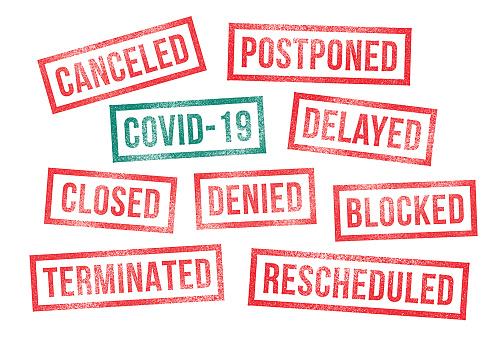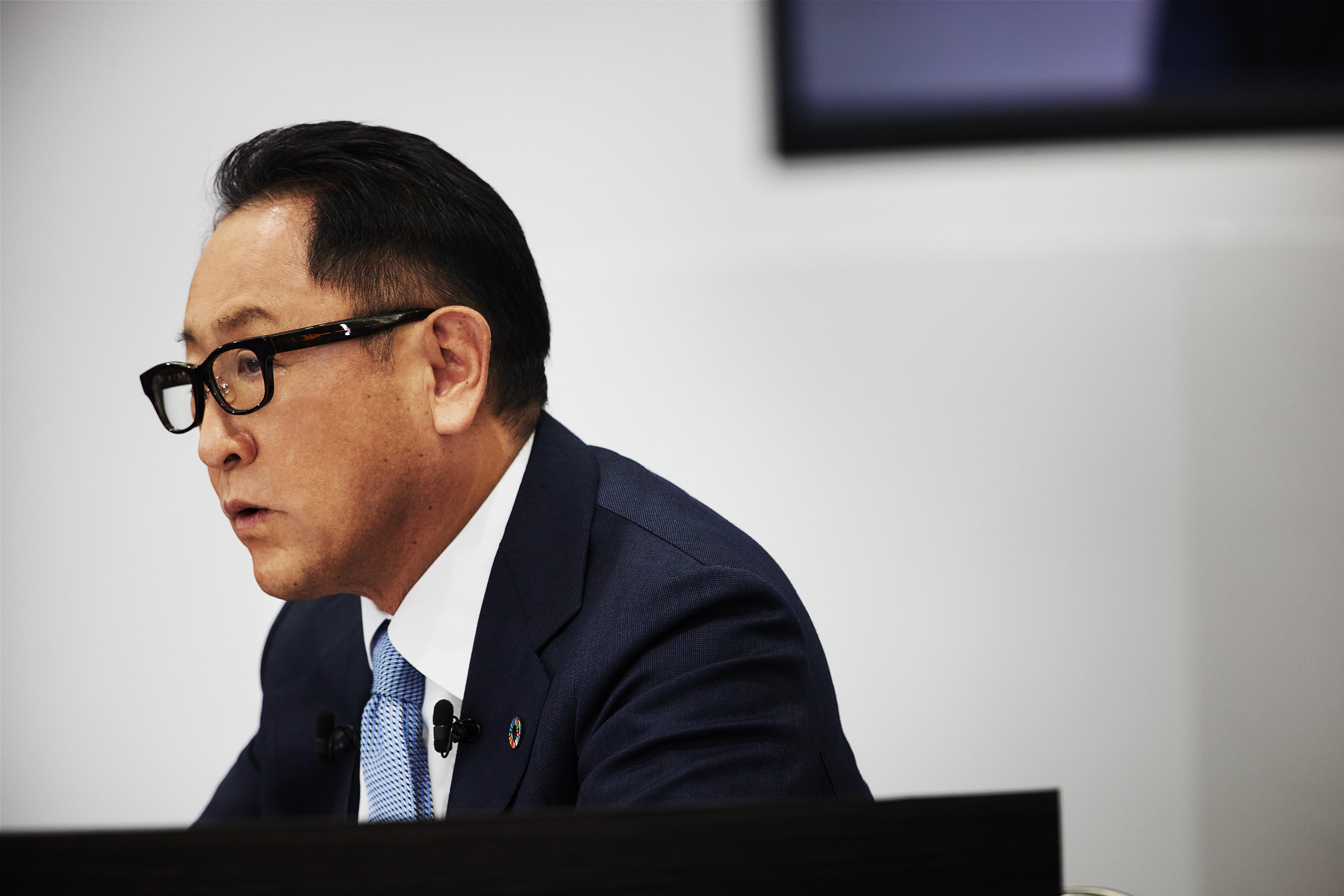
Automotive and business journalist, Naoto Ikeda, takes a closer look at Toyota's 1H/2Q Financial Results and shares thoughts about the significance along with Toyota's future forecast, especially during the current global crisis.

In a bit of surprise, Toyota, at its second quarter/first half fiscal year 2021 results announced on Nov. 6, disclosed an operating income of 506 billion yen (in the period from July to September) and revised its full-year forecast upward by 2.6 times the original forecast to an updated forecast of 1.3 trillion yen. As for the reason for this – what was it and what is the real situation?
From here on, automotive and business journalist Naoto Ikeda reviews Toyota’s 1H/2Q FY2021 results briefing, one which will be remembered as a time when President Toyoda himself took to the stage to discuss Toyota’s founding principles.
How Toyota fought COVID-19
While the numbers for Toyota’s financial results for the first half of the fiscal year ending March 31, 2021 were released at the briefing, the results perhaps revealed even more about Toyota’s incredible power of recovery.
The 2020 COVID-19 pandemic will long be remembered in history as having been a test for humanity. In April 2021, when the quarter began, I was horrified by the prospect of something similar to the Great Depression. This was a big deal. Cities would be flooded with unemployed people and the economy would be close to burnout. If that were the case, I knew that some of the world’s automakers would not survive and go bankrupt; I was sure that even Toyota would have no way of escaping massive losses.

That was probably a reasonable expectation for a disaster similar to or greater than that magnitude to hit the world. In fact, this is the first time in human history that lockdowns have been placed in developed economies. The cost of forcing the global economy to shut down will be high. It was inevitable that the first quarter of the year revealed eye-watering deficits as businesses were forced to suddenly stop without any precautions and fixed costs continued to be incurred.
Even assuming the COVID-19 pandemic is able to be well controlled by the high cost of the lockdown, the second quarter was thought to be in between red and black at best. The full year’s results will then become a matter of whether the company can make up for the big hole it left in the first half of the year in the third and fourth quarters. Of course, all of this depends on when or even if COVID-19 will end, but most expect it will be a pretty tough tightrope to walk.
All that notwithstanding, Toyota was astoundingly strong. The company accomplished nothing short of an impossible miracle when it finished the nightmare first quarter (April-June) while still maintaining an operating profit of 13.9 billion yen. Now, at the end of the second quarter (July-Sept.), Toyota’s results show that it quickly rebounded, reporting an operating profit of 506 billion yen, 76.8% of what it had previously forecast. Who could have predicted such a result?
Initial forecasts for ¥500 billion profit are already cleared
Reeling back the clock to May, when the company announced its earnings for the prior fiscal year (ending March 31, 2020), Toyota’s super bullish outlook took the business community by surprise, as it was right in the middle of the time when global economy was being hit by the storm. It should also be noted that had this crisis not hit, Toyota was on track to make a profit of about 2.5 trillion yen.
This is what might have led to the rather poorly chosen headline in some newspapers the day after the announcement, which said things like: “Toyota’s profit down 80%,” which, to be fair, is not incorrectly calculated. However, this headline as an assessment of Toyota’s forecast for a ¥500 billion surplus under COVID-19, feels like a rather non-professional analysis as business media and journalists.
Returning to the main topic, Toyota achieved its initial ultra-strong forecast in just the second quarter’s results (from July – Sept.). As a result, the company’s new full-year profit forecast has been revised significantly upward, by 2.6 times, to a new forecast of 1.3 trillion yen.
That means further profit growth in both the third and fourth quarters. Since the company earned more than 500 billion yen in profit in only the second quarter, that’s a reasonable forecast. However, to be honest, I am beyond surprised, actually completely astonished, at the progress being made in front of my eyes.
Turning to the operating profit margin, the company hit 7.5 percent on its own in the second quarter. If you look around at other global automakers, it’s relatively normal to see them hovering around the five percent profit margin line in “normal” times, sometimes even falling below three percent when there is no economic crisis. But in the period of July to September, with the COVID-19 pandemic still fresh in our minds, we can hardly believe our eyes when we see a profit margin of 7.5 percent.
In its full-year profit forecast, the company announced a five percent margin, the percentage being dragged down by the lower numbers posted in the first-quarter. However, it is probably a sign of being too greedy to choose to complain about this.
While the first quarter defended and maintained the offensive line of profitability, it was hardly profitable in real terms. Making up the for the first quarter’s results in the three remaining quarters shows a rather honestly surprising figure of five percent. But we really must remember that this performance is coming under a historic economic crisis.

The result of steady efforts
Now, let’s check out what factors led to the increase or decrease in operating profit in the first half of the year that made Toyota so successful. It would be nice to know what Toyota has done to steer clear of this predicament.
In the same period of the previous year, that is, the April to September 2019 period, the company’s operating profit was 1,399.2 billion yen. In 2020, the total was 519.9 billion yen for the April to September period. The first quarter’s (April-June) operating profit was a mere 13.9 billion yen, so most of the first half's profit came from the second quarter, or the period from July to September.
When a global economic risk such as the COVID-19 pandemic occurs, the yen is bought around the world as a safe currency, and the yen strengthens. There is no way to avoid this.
In the aftermath, manufacturers who want to convert sales from exports and other sources to the yen will be forced to post foreign exchange losses. This is especially true for Toyota, which has set a goal of maintaining domestic production at an annual level of approximately three million units, which also serves as a way to help protect domestic jobs.
The results for the first half show that the effects of the company’s foreign exchange (FOREX) rates was a loss of 120 billion yen. The results show that the company’s business itself was facing severe headwinds and the foreign exchange rate was also deteriorating.
On the other hand, Toyota’s signature “cost reduction efforts” returned 50 billion yen to the company. From there, the number of units and vehicle model mix, an area directly affected by COVID-19, reduced the potential income by 970 billion yen. Efforts to reduce expenses, such as overhead costs, added back 115 billion yen to the profit. Finally, another 45.8 billion yen was added back in under the category listed as “Other,” which is for valuation gains or losses from swaps.
Of all the aforementioned figures, the most impressive results are from efforts to reduce expenses, the one above that amounted to 115 billion yen. These savings are generated, for example, from reductions in expenses associated with things like business trips and events.
While it could be argued that this is a natural consequence of the restricted travel [imposed by COVID-19], Toyota’s explanation is that it is in the billions of yen range, and most of the 115 billion yen accounted for in the announced results for the first half is actually the result of day-to-day savings across all accounts.
The battle for profit is itself actually a steady effort to reduce costs and control expenses. In addition to reducing expenses for better profit, the positive effect of cost reductions increases as the number of units sold increases, which means that the effect would be and is limited in a situation like this one, where sales are down. Therefore, the 50 billion yen that has returned from cost reduction efforts is worthy of recognition.
For consumer durable goods like cars, even if there is a temporary drop in demand, it is generally assumed that it will pick up again later. Unless people take the opportunity to get rid of their cars, they will eventually buy a new one at some point.
If this were to happen, there is a risk that demand may suddenly rise after the downturn and production would not be able to keep up. With this in mind, the manufacturing department took advantage of the increased downtime on the line during the declared states of emergency to improve productivity by making use of the waiting time.
In short, they saw the reduction in plant operating hours as an opportunity to improve the plant equipment and production technology, and immediately took action to improve it. The results of these activities should contribute to the counterattack in the third and fourth quarters.
Transformation since the global financial crisis
By looking at the numbers as a base, the specifics are basically as outlined above; however, the answer to how Toyota was able to prevent and/or minimize damage resulting from the crisis lies in the long-term evolution of Toyota’s management structure.
In the aftermath of the global financial crisis, the company posted a large deficit; this led to thorough structural reform and a drastic reduction in its break-even point.
Simply put, this crisis allowed the company to refine its technology for making cars at a lower cost, but what is amazing is that the cars themselves are now incomparably better than they were back at the time of the global financial crisis, even with the costs being reduced.

Unlike economic analysts, those of us who make a living critiquing cars for a living know firsthand the significant improvements that have been made in the products themselves as we test-drive each new model. We drive the car to confirm its performance and interview the engineers who worked on it to find out more about the technical and design concepts.
Toyota’s cars available for purchase today are not only a real benefit in terms of good production quality and durability, but they are also fun to drive and fun to own. The difference in the intangible value of these products is extremely large. Ten years ago, we honestly never thought that we would see the day when we would be able to say that Toyota vehicles in general were fun to drive. Toyota has made extensive progress in every aspect of its business.
On the other hand, Toyota’s strong earnings results are sure to draw a lot of criticism. As a matter of fact, in an article I once wrote about Toyota’s financial results, I received the following comment: “Are you saying that if Toyota wins, it doesn’t matter what happens to Japan?” That is ridiculous. If the fourth hitter strikes a home run lead, or the third hitter is the top hitter, is that an act of revenge for the team’s victory?
Japan is an important player in a liberal economy, and we usually believe that in a liberal economy, the accumulation of individual efforts and individual victories promotes the progress of society as a whole.
On the contrary, I would like to ask, do you think that the ideal is to have everyone hold hands in a race to the finish line and all of us take the first place? The results are the culmination of various trials, and there is no point in making the results equal.
The ideal is that everyone should be able to work on each initiative freely at the trial stage, and that is where everyone needs to be treated equally. Equality in opportunity and equality in outcome may seem similar, but they have very different meanings.
A link to President Toyoda’s speech is provided at the end of the article, but if you read it carefully, you will understand. Toyota’s goal is not to make money. In his speech, President Toyoda newly declared that Toyota’s mission as a company is “Producing Happiness for All”. In order to fulfill that mission, the survival of the company must not be jeopardized. The real question is whether the company will be able to make a fair profit and what it will do with that profit.
Future vision
Now, if we were to sum up the financial results themselves, it might be said that Toyota has almost escaped the negative effects of COVID-19. The company's underlying strength has been demonstrated, but a second lockdown has begun in Europe, and the situation in North America is unpredictable. We cannot ignore the possibility of the return of this or another pandemic in the future.
Since there is no assurance that a forecast taking that into consideration would be correct, the best that can be done is maintaining the status quo, or assume that the situation will improve. That is why Toyota’s forecast and upward revision is astonishing, as has been written to this point.

The first part of Toyota’s recent financial results presentation was an explanation of the financial results, while the second part featured remarks from Toyota President Akio Toyoda. As mentioned earlier, in the second part a new definition of Toyota’s mission that will guide the company in the future was introduced. It is a new code of conduct to “produce happiness for all”.
Moving forward, it is this author’s intention to focus on whether or not this new code of conduct is being properly followed. If there is anyone who wavers from this code of conduct, it is my intention to critically call this behavior out.
What’s important is the happiness of society as a whole, and as long as Toyota’s commercial success is in line with that, it should be considered a success. If the results is only that Toyota is happy, then I would consider it as something I can’t support. I would like to conclude with the full text of the speech below.
[Toyota Times] Toyota FY2021 1H/2Q Financial Results - Why Akio attended

